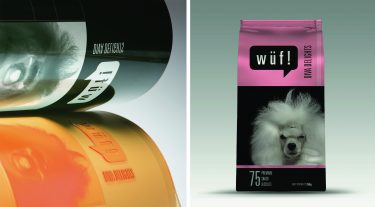Competition for consumers’ attention has never been fiercer and packaging is an important tool in the kit. With connection, allegiance and loyalty to play for there’s plenty at stake. Miraclon explores the concerns driving brands’ decisions on packaging and how can print providers help.
As brands change how they talk to consumers, packaging is becoming more important than ever. It’s a core communications channel loaded with the potential to connect, resonate and stand out. In the zero moment of truth when shoppers’ decisions are made, effective packaging is vital. “How do you stand out on the shelf and how do you communicate why someone should want to buy your product as opposed to something else?” Procter and Gamble’s (P&G’s) Research Fellow Ken McGuire is used to asking demanding questions of his products’ packaging. As named inventor on more than 50 US packaging patents it’s his job to develop packaging breakthroughs that could work for any of P&G’s brands, from diapers to cleansers.
“It’s all about disrupting that on-automatic behavior people have when they shop,” he continues. “From the very beginning of the product design, the packaging has to do a great job of communicating what it is about that brand that’s special.” This brings with it a host of concerns for brands big and small. Concerns that the smart print providers are tackling head on…
Concern 1. How do I maximise impact?
To stand out, brands need to be brighter, bolder and sharper than the rest. Miraclon’s Director of Advanced Print Applications Dr John Anderson explains that recent advances in flexo printing technology mean photorealistic imagery with high contrast and fine fades are helping products leap off the shelf. “We’re now seeing brands starting to realise they can do high-fidelity reproduction and resolution of images they didn’t think possible,” Dr John continues. “We’re even starting to see a trend where this is achievable at lower line screens. Rather than forever chasing higher and higher line screens they can stay at 133 versus 150 or 175, produce really great looking artwork with high detail fades and give their printers a lot more production latitude. It’s a win win.”
Robert Chiapuzzo from Global Flexo Innovation Award winner CR Serigrafia, agrees. For his Milan-based pre-press business it wasn’t just the impact and quality of flexo printing that they knew would appeal to customers, it was the opportunity to improve on what was being done elsewhere. Working with its customer Esbe, a leading producer and printer of plastic food packaging, CR Serigrafia developed a way to flexo print premium quality images directly onto conical plastic containers, combining an Omso Servocup 237 system with KODAK FLEXCEL NX plates. “High quality, high impact imagery on pack is more and more important and was the main thing we were looking for,” he explains, “but the real innovation is eliminating sleeves; while maintaining the quality – it takes cost and materials out of the process. We believe it’s the future.”
Esbe’s Stefano Fortusini couldn’t be happier with the process and output. Which means the brands he works with are happy too. “The results we’re getting are superb, with a much higher resolution and better colour range, as well as being able to print special spot colours out of the CMYK ink set,” he explains. “And as for whites – they’re now perfect. Overall the level of quality is almost photographic which would have been unthinkable using dry offset.”

Concern 2. How can I make sure my packaging print quality is consistent?
The need to turn heads with packaging affects brands of all shapes and sizes, but as product ranges grow additional concerns rear up. When your brands take in a vast range of products and packaging types, all the various iterations of the brand must be consistent. William Roberts is Managing Director of Global Flexo Innovation Award winner Roberts Mart & Co, a flexible packaging manufacturer based in Leeds, UK. His clients include many FMCG blue-chips from Mars to Haribo, to Tate and Lyle. He says consistency across ranges and from design to design, is the biggest thing his clients demand. “Many of our customers now measure every repeat order to the first print run,” he explains. “We’ve got one customer in the snack market who has 30 to 40 packaging types in its range. When they’re sat alongside each other they all have to be identical.” William mentions having ‘a lot of fun’ doing this for Galaxy chocolate designs, where different products in the range were printed on different materials using both gravure and flexo, making it particularly hard to match the colours. The trick was in finding the best fit for all the materials and substrates to achieve consistency, and that takes care and attention. “We measure every colour off every reel,” says William, “and have the highest tolerances on all our presses.”
Concern 3. How can I tackle the sustainability challenge?
For many brands today, responding to the pressure to print and package more sustainably is a driving motivation. In its recent ‘No Ordinary Disruption: The Four Global Forces Breaking All the Trends’ report, which looked ahead to the packaging landscape of 2020, The McKinsey Global Institute identified sustainability as a key trend that will change the game for packaging in the next five to ten years. Ken from P&G is certainly feeling it. “We just had the top 35 technologists in all our packaging R&D together for three days,” he explains. “Every single one has some sustainability project on their portfolio. It’s certainly a huge opportunity for us. And if we don’t do it well, it could be a big problem.”
For small brands too, the opportunity and challenge are palpable. Although they might not have the resource of a multinational’s research department, they are often nimble and passionate – able to experiment and pivot towards the latest breakthroughs. For them, truly sustainable packaging can become a powerful communications channel, a chance to show – in an instant – that their brand stands for something. Today’s leading edge flexo is well positioned to respond. Versatility, lower costs and an ability to print on an ever-expanding range of substrates are valuable. But what the flexo community also has to offer when it comes to brands looking to realise their sustainability ambitions is an appetite for innovation. “The best flexo printers are eager to collaborate, experiment and break new ground to help brands realise their ambition,” Dr John continues. “Sustainable materials are a challenge – but they’re also a huge opportunity for pre-press specialists and printers to show what flexo is capable of – with colour, consistency and material.”
Global Flexo Innovation Award winner Lorytex is a great case in point. Based in Montevideo, Uruguay, it embarked on a project to develop its expanded colour gamut (ECG) printing offer, with its packaging client and collaborator Ecoflex SA. The result was a 30% faster turnaround, reduced ink inventory, and exceptional visual impact. “ECG can provide a real boost for brands,” says Lorytex’s managing director Roberto Dolinksy. “When we demonstrate how efficient the process is and the quality results possible, there’s a real interest.” He’s also keen to stress that the key to this project’s success was close collaboration with his client and he would advise any other printer to do the same. “On projects like this, we get involved right at the start, at design stage,” he concludes. “This is important with flexo because the process is new territory for many creatives. If we understand what the designer and the brand want the packaging to communicate, we can apply our knowledge of the technology to achieve the best results.”
We couldn’t agree more.
Join the transforming flexo community
Sign up to Miraclon’s newsletter The Plate to be part of a community that shares the latest insights, stories and interviews from contributors around the world at the frontline of the flexo revolution, www.miraclon.com/subscribe
This article is an advertorial; the featured company created the wording and paid for its placement. It has been checked by Whitmar Publications to ensure that it meets our editorial standards.






